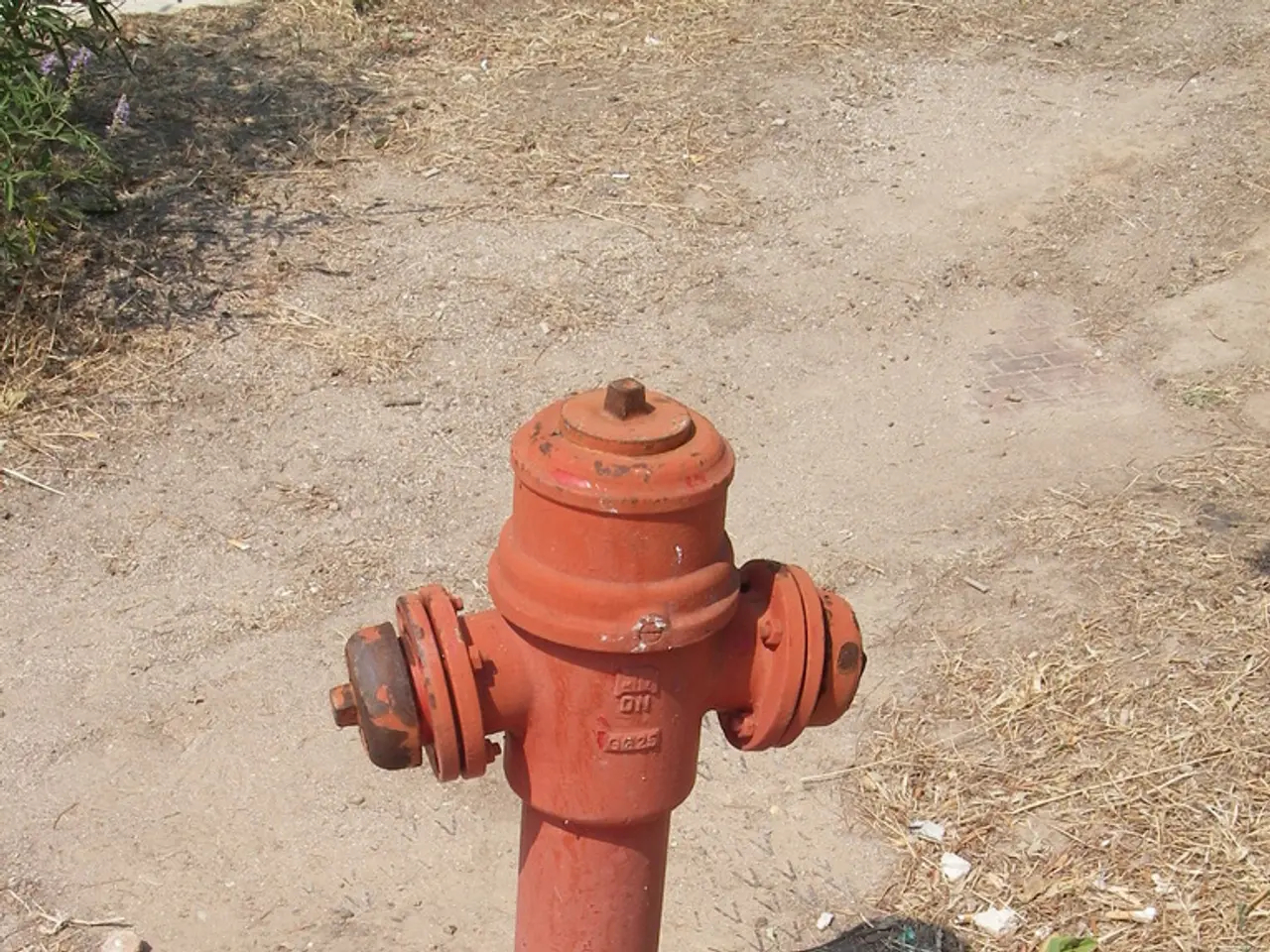Blooming vividly throughout the season with subtle shifts, here's a guide on how to cultivate Hydrangea paniculata.
Growing and Caring for Hydrangea Paniculata
Hydrangea paniculata, commonly known as panicled or paniculate hydrangea, is a hardy, colorful, and adaptable shrub that is a popular choice for gardens across the UK and US. This deciduous shrub or small tree belongs to the Hydrangeaceae family and is known for its large, cone-shaped flower clusters (panicles) that change color throughout the growing season.
Key Characteristics
Hydrangea paniculata's key characteristics include:
- Flowers: Large panicles starting creamy white or green, maturing to pink and eventually deep red or burgundy by late summer to autumn. Some cultivars display multiple bloom colors simultaneously.
- Foliage: Oval-shaped leaves with serrated edges that often provide attractive seasonal color, sometimes turning red, purple, or orange in fall.
- Growth Habit: Generally upright with some cultivars having a mounded habit.
- Stem strength: Most modern varieties have strong stems that resist flopping.
- Cold Hardiness: Very cold hardy, with USDA zones ranging from 3a (about -35°F / -37°C) up to zones 8 or 9, depending on the cultivar.
- Sun Exposure: Tolerates full sun to partial shade, with panicle hydrangeas being the most sun-tolerant among hydrangeas.
- Bloom Season: Blooms on new wood, typically starting in early to mid-summer and lasting through fall.
Growth Conditions
Hydrangea paniculata thrives in a variety of conditions:
- Hardiness Zones: USDA zones 3 to 9, depending on the specific cultivar.
- Soil: Prefers loose, well-drained soil, rich in organic matter.
- Water: Requires heavy watering to keep the soil moist, especially during dry periods.
- Fertilization: Usually, none needed or fertilize only when necessary.
- Spacing: Generally spaced 4 to 6 feet apart (about 48 to 72 inches) to accommodate mature size.
- Pruning: Prune in late winter or early spring since flowers form on new wood, encouraging vigorous blooming.
- Heat and Shade Tolerance: These hydrangeas tolerate heat, shade, and frost quite well, making them adaptable to various climates and garden conditions.
Propagation and Planting
Hydrangea paniculata can be propagated through various methods:
- Hardwood cuttings: Take hardwood cuttings from hydrangea paniculata just after leaf fall or just before bud burst, and insert them to two-thirds of their length in free-draining soil or in a pot of compost with a base layer of sharp sand.
- Semi-ripe cuttings: Take semi-ripe cuttings from the current year's wood (midsummer to early autumn) just below a leaf, and dip them in hormone-rooting powder or liquid before placing them around the edge of a pot of a 50:50 mix of peat-free cuttings compost and sharp sand or perlite.
- Softwood cuttings: Take softwood cuttings in spring and early summer from the current year's new growth, and dip them in rooting powder or liquid before covering the pot in a plastic bag and placing them in bright sunlight or a propagator at 18-24°C.
Plant hydrangea paniculata in moist soil at the same depth it was planted in the nursery, in a sheltered position, in sun or part or dappled shade. Improve surrounding soil with well-rotted organic matter or leafmould before planting.
Notable Cultivars
Some popular cultivars of Hydrangea paniculata include 'Fire Light' & 'Fire And Ice', 'Vanilla Strawberry', and 'Sweet Summer'. These cultivars offer a range of sizes, flower colors, and growth habits, making them suitable for various garden settings.
Maintenance and Care
Mulch after planting hydrangea paniculata with well-rotted organic matter, then annually in spring. Pruning methods can yield different results, with light pruning producing smaller heads that are greater in number and bloom earlier, and hard pruning producing fewer, larger heads.
Hydrangea paniculata is an excellent choice for borders, hedges, or as standalone features, offering multi-seasonal garden interest with minimal maintenance. With proper care and attention, this versatile shrub will provide beauty and enjoyment in your garden for years to come.
[1] RHS (Royal Horticultural Society). (n.d.). Hydrangea paniculata. Retrieved from https://www.rhs.org.uk/plants/32027/Hydrangea-paniculata/details
[2] HGTV. (n.d.). Hydrangea paniculata: How to grow hydrangea paniculata. Retrieved from https://www.hgtv.com/gardens/flowers/shrubs/hydrangea-paniculata-how-to-grow-hydrangea-paniculata
[3] Gardener's World. (n.d.). Hydrangea paniculata: How to grow hydrangea paniculata. Retrieved from https://www.bbc.co.uk/gardening/howto/plants/hydrangea_paniculata
[4] Missouri Botanical Garden. (n.d.). Hydrangea paniculata. Retrieved from https://www.missouribotanicalgarden.org/PlantFinder/PlantFinderDetails.aspx?kempercode=h144
[5] GardenGuides. (n.d.). How to grow hydrangea paniculata. Retrieved from https://www.gardenguides.com/122020-grow-hydrangea-paniculata.html
- Home-and-garden enthusiasts might choose to incorporate the versatile Hydrangea paniculata into their garden landscape, as it thrives in various soil and climatic conditions and offers multi-seasonal interest with its changing flowers and foliage colors.
- In addition to landscaping, Hydrangea paniculata, a hardy and adaptable shrub, can be an excellent standalone feature in gardens and can even be propagated through multiple methods, such as hardwood cuttings, semi-ripe cuttings, or softwood cuttings.
- With proper maintenance and care, including annual pruning and mulching, Hydrangea paniculata can provide beautiful blooms and garden interest for several seasons, ultimately becoming a cherished feature in your home and garden lifestyle.




